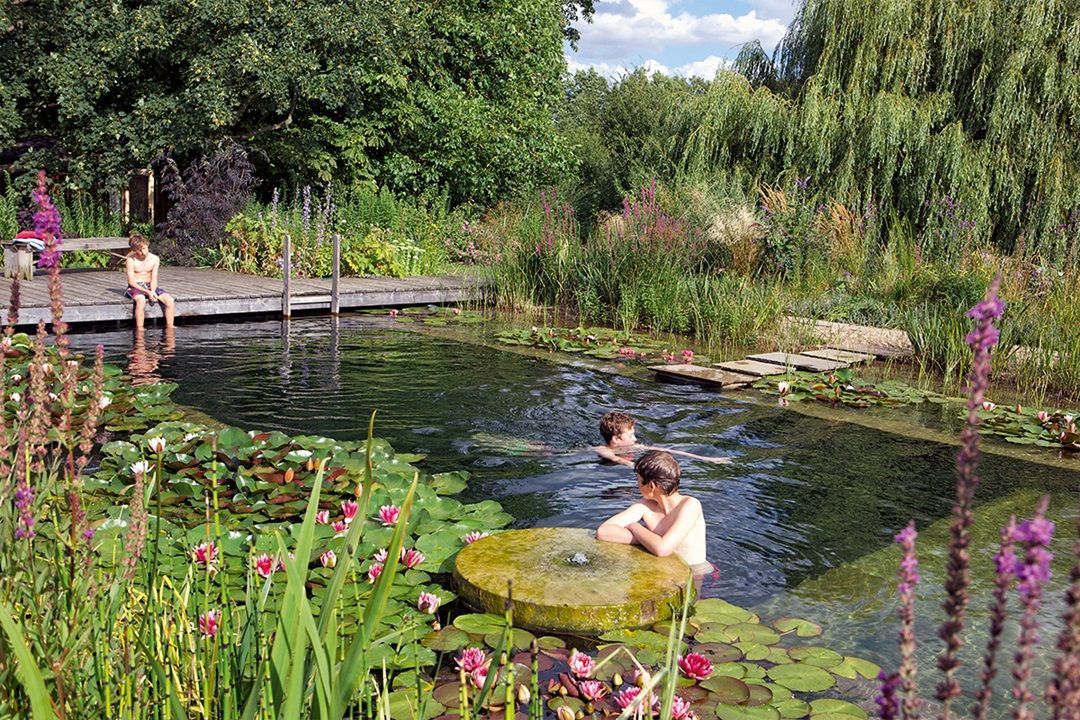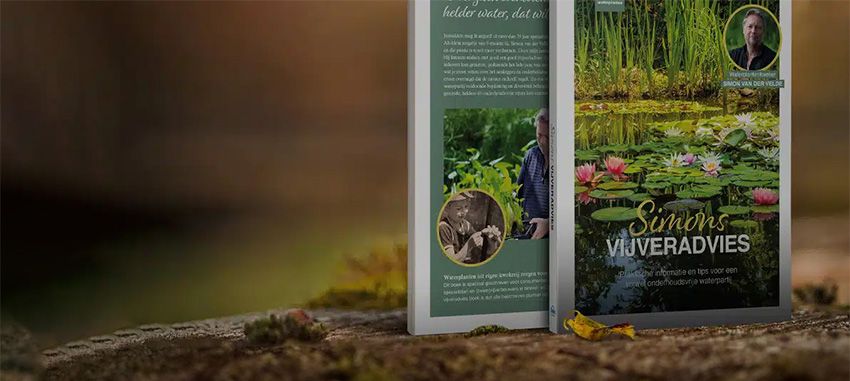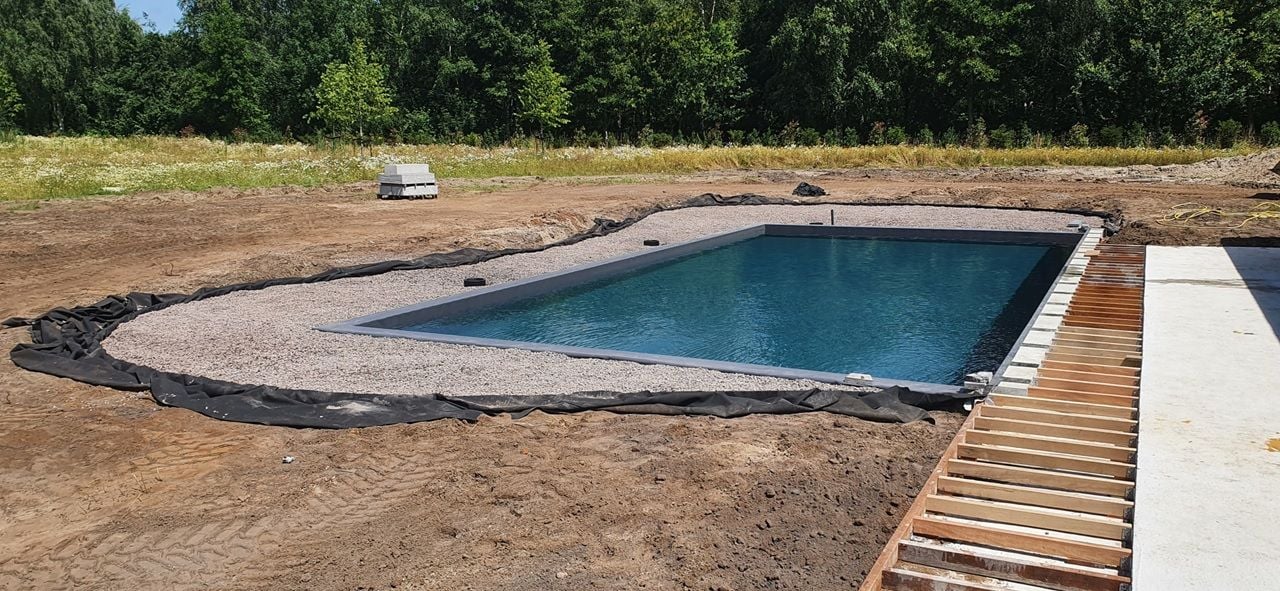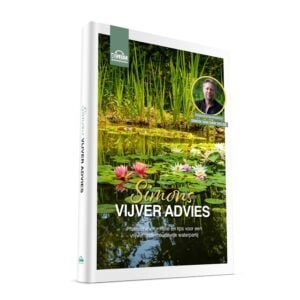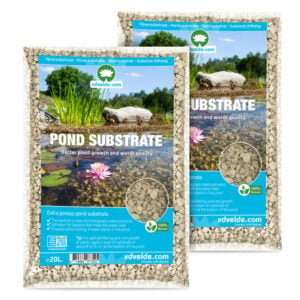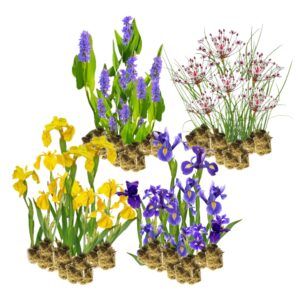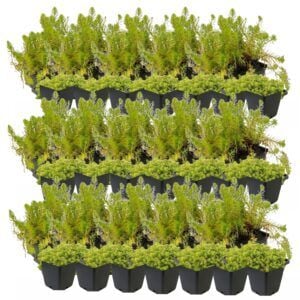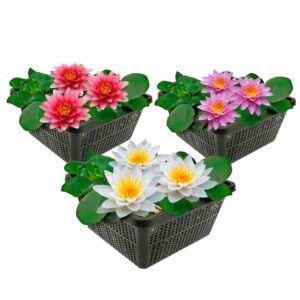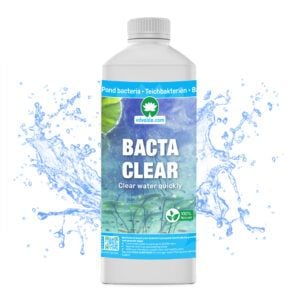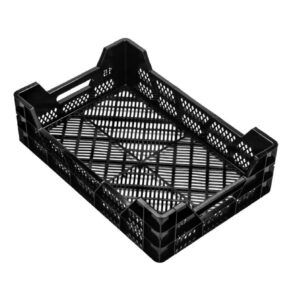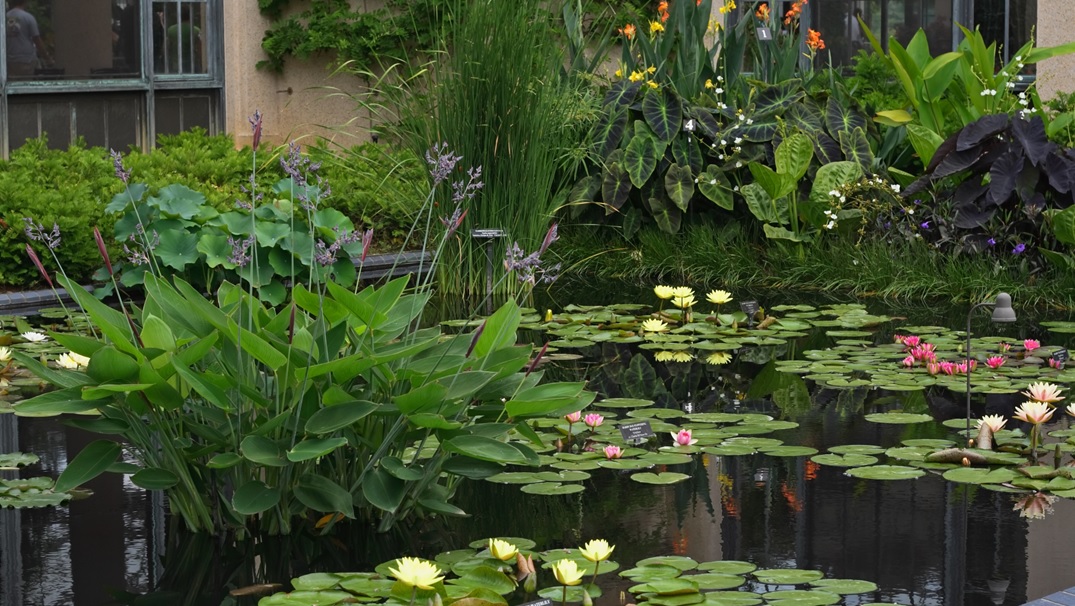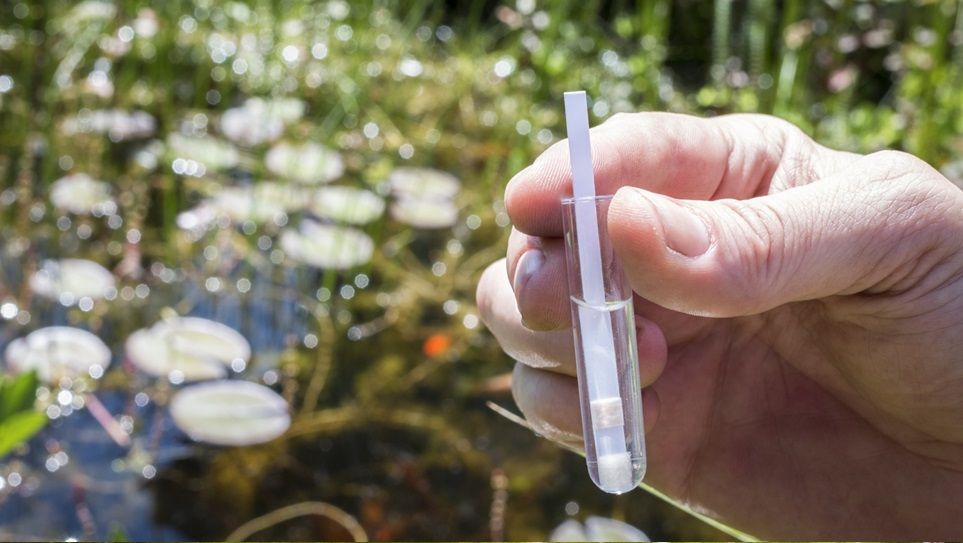Swimming pond
Swimming pond
Looking for the perfect natural swimming pond?
With our expert advice following our 6-step plan, you can build your natural pool yourself.
Avoid mistakes and save at least $1,000 with Simons Pond Advice Book.
All aquatic plants and products for biological filtration of swimming water can be easily ordered through our web shop and quickly delivered to your home.

For improving biodiversity, low cost and low maintenance, a garden swimming pond is a better choice than a traditional pool.
Others bought this for their swimming pond
Simons Pond Advice Book
- Choose your language of the book
- Complete pond handbook
- 100+ pages from construction to maintenance
Pond substrate - 40 liters
- 40 L covers 1 m² ↥ 10 cm
- Heavy duty quality for the best filtration
- Extra porous: optimal plant growth
Anti Algae Plant Filter Package - Large
- For 10 - 20 m²
- 96 plants
- Placement: -1 to -80 cm
BACTA CLEAR
- Pond bacteria for 1,000 to 20,000 L
- 100% eco: clear water fast
- Safe for humans, plants & animals

Nature pool
Use the fall or winter months to build a swimming pond. That way you can enjoy a cooling dip in the spring and especially in the summer! Given the increasingly hot summers, this is certainly not an unnecessary luxury.
Choosing between a traditional pool and a natural pool can be tricky. A regular pool with crystal clear water is often associated with the ultimate vacation feeling. However, a swimming pond or natural pool is an environmentally friendly alternative that does not require chemicals such as chlorine or heating. Aquatic plants provide natural filtration and keep the water clear and pure. As for cost, generally the initial cost of a natural pool is lower than that of a traditional pool.
A major advantage of a swimming pond is that it is relatively easy to build yourself. An important part of this is the plant filter. Thanks to our years of experience we can give you excellent advice. All supplies for a filter and the plants we can deliver to you from our own nursery.
How does a natural swimming pool work? Constructing a filter area with purifying and visually appealing aquatic plants creates a natural filtration system. Pond plants with a good root system will naturally filter the water. The result is clean water in which you can enjoy swimming. You have the reassurance that you are not swimming in water containing chemicals and that you are contributing to improving nature in an organic way.
Whether you choose the sparkling look of a traditional pool or the rustic charm of a natural pool, both options have their own unique benefits. Read on in our comparison chart below to make the perfect choice for your garden.
Swimming pool vs natural pool

|

|
|
|---|---|---|
Pool |
Nature pool |
|
| ❌ Regularly | ✅ Limited | |
| ❌ Yes | ✅ None | |
| ❌ Higher | ✅ Bearing | |
| ❌ Neutral | ✅ Of course | |
| ❌ Limited | ✅ Optimal | |
| ❌ Risk | ✅ Safe | |
| ❌ Neutral | ✅ Promotes | |
| ❌ Higher | ✅ Bearing | |
| ✅ Flexible | ❌ Limited | |
| ❌ None | ❌ Present |

Build your own swimming pond in 5 steps
Building a swimming pond offers the perfect balance between natural beauty and sustainability. Combining attractive design with the power of natural filtration, a swimming pond offers an eco-friendly and virtually maintenance-free alternative to traditional pools. It all starts with proper preparation: from choosing the right digging materials and pond liner to selecting the ideal aquatic plants. We offer a step-by-step guide to building your swimming pond yourself, while our additional tips will ensure you get the most out of this natural paradise. Enjoy your refreshing swim carefree while animal life makes itself at home in the plant filter and nature does the heavy lifting.
1. Planning and design
Style determination
Determine the atmosphere of the pond by looking at the materials already used in the garden. It is most aesthetic if the swimming pond blends seamlessly with the rest of the garden. Also consider a seating and lounging area next to the pond.
Size and location
Choose the location in the garden that receives the most sunlight so that the water can warm up optimally. It is also important to choose a spot that is not too close to deciduous trees and shrubs. Provide enough space around the swimming pond so there is room to walk, sit or lie down.
The filter should be large enough: the larger the filter section, the more effective the filtration and the clearer and purer the water will be. The filter section should be at least twice the size of the swimming section. Our advice is always to make a simple drawing showing the dimensions and depths. The swimming section should have a depth between 1.50 and 1.80 meters, while the filter section needs a maximum depth of 40 to 50 cm.

2. Digging the pond
Mark the outline of the swimming pond with stakes and ribbon according to the drawing, so that the shape is clearly visible. Digging can now begin.
Pay extra attention to the stability of the walls and make sure they are well supported. The deeper the pond, the more crucial it is to make the walls solid to prevent collapse.
Create an effective separation between the filter and swimming area. This can be done with an L-profile, or with a wooden or stone partition to prevent the filter material from entering the swimming area. The top of this partition should be 5 to 10 centimeters below the water surface.
3. Application of pond liner
We recommend using a high-quality rubber liner, such as EPDM. This liner is durable, stretchable and can easily take the desired shape of the pond. Although this type of liner is more expensive than, say, PVC, it offers numerous advantages. Many suppliers also offer a warranty on the liner that can reach up to 30 years.
Make sure the foil is finished neatly at the edges, such as with hardwood cover battens or stones.

4. Setting up the plant filter
Start by covering the surface of the plant filter with 30 inches of pond substrate. Then plant our specially selected filter plants in the substrate and apply another layer of substrate for a neat finish. Make sure that the leaves of the plants rise above the substrate.
Then begin gradually filling the filter with water. The substrate is very porous, which is important for a good habitat for pond bacteria and ensures optimal rooting and growth of aquatic plants. Because of this porosity, the substrate will slowly fill up with water. If a small portion of the substrate floats, remove it with a scoop net and allow it to further fill up in a specimen tub or apply it to the shallowest part of the plant filter.
5. Maintenance
An organic swimming pond with an extensive plant filter requires minimal maintenance. Our advice is to remove excess plantings in the fall and prune the plants back so that about 20 inches of the plant protrude above the water.
In the fall (September), we recommend adding additional Bacta Clear pond bacteria. This promotes the breakdown of dying leaves and can reduce any soil silt.
In the spring (March/April), bacteria and some new filter plants are needed again. These are intended to fill any empty spaces in the filter so that the filter can continue to do its job optimally.

Setting up a swimming pond in 6 steps
Below we provide information on the various options for planting a swimming pond. Here we do not focus on the technical aspects such as pumps, filters or water improvers. In this way you can support the natural balance of the pond and enjoy it carefree all year round.
1. Pond substrate

Good preparation is half the battle and can prevent both problems and unnecessary costs. Therefore, write out the step-by-step plan and follow it carefully to ensure that you don't overlook anything. The right substrate plays a crucial role here. Although lava is cheaper, it is much less effective. The adhesion of bacteria to lava is 50 percent less efficient, and many pond plants do not root as well or at all in it. As a result, the filter may not function as well or at all. Wastes are then not removed from the water or are only partially removed.
A good quality substrate prevents these problems. Our pond substrate is low maintenance and will last a lifetime, making it an excellent investment.
Simons advice for pond substrate
Provide a minimum filter depth of 40 cm and keep 10 cm of water above the substrate. Although Big Bags of substrate are suitable for larger filters, many people find them impractical and therefore choose bags more often. To cover 1 m² of pond bottom with a 10 cm layer, you need 40 liters of substrate. An effective plant filter requires 120 liters of substrate per 1 m², giving a filter layer of 30 cm.
Pond substrate - 40 liters
- 40 L covers 1 m² ↥ 10 cm
- Heavy duty quality for the best filtration
- Extra porous: optimal plant growth
2. Oxygen Plants
Want to prevent an algae explosion of floating or filamentous algae? Then make sure to place plenty of oxygen plants in your pond early in the season, around March or April. The top layer of water warms up quickly once the first rays of sunlight appear, causing algae to start growing. Existing ponds also need additional oxygen plants. The lower water layer, where oxygen plants overwinter, warms up later than the upper layer. This causes oxygen plants to grow slower than algae, which is a common problem in natural pools.
No one wants algae in their pond, and certainly not in a swimming pond. Most problems in plant filters and swimming ponds are caused by a lack of plants. Therefore, always invest in additional low-growing oxygen plants such as Needleweed and Acreweed. These plants cover the water surface and prevent the sun from quickly warming the water. Moreover, they convert carbon dioxide in the water into oxygen, which contributes to the death of algae.
Simons advice for oxygen plants
Always make use of Acreweed and Needleweed as perennial oxygen plants. Place 4 to 8 plants per 1 m², depending on how quickly you want to see results.
3. Waterlilies

Do you want an ultimate and colorful swimming pond? Then water lilies are indispensable. These hardy plants come in different shapes and sizes, and are suitable for various depths. With their large leaves, they not only block sunlight on the water surface, but also prevent algae blooms and excessive warming of the water. You can plant a water lily already at a depth of 10 cm below the water's surface, creating a lively and healthy dynamic in your swimming pond.
Simon's advice for a water lily
A water lily thrives in as little as 10 inches of water and can then produce flowers. There is room for a water lily in almost any plant filter, with a minimum of 1 water lily per 0.5 to 3 sq. m.
4 & 5. Water and Sumpfpflanzen
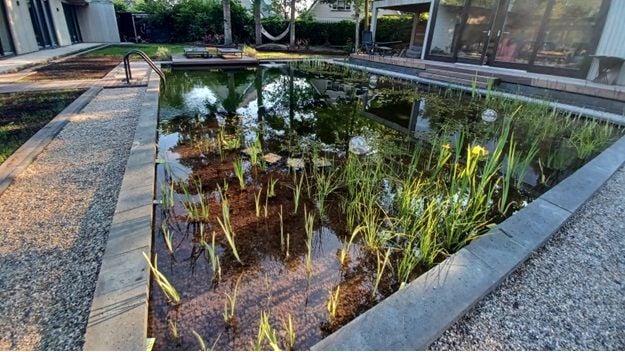
A swimming pond is an enrichment for any garden and is primarily intended for swimming. Often people find it less pleasant to have aquatic plants directly in the swimming area. However, aquatic plants are essential for a healthy swimming pond. Therefore, many swimming pond owners opt for a separate plant filter with specific filter plants. This plant filter is separated from the swimming area, so that while swimming you are not bothered by the plants, but can enjoy the view of this flora.
The filtration of the water mainly takes place in this plant filter, which makes it a crucial part of the swimming pond. It is therefore important to add enough aquatic plants to the plant filter to keep the water clear and healthy. This way you can swim carefree and without risk of skin irritations. Always choose a combination of Sumpfpflanzen and oxygen plants; they reinforce each other in purifying the water and adding oxygen to the pond.
Simons consulting for water and Sumpfpflanzen
For an effective plant filter, plant at least 16 pond plants suitable for a plant filter per square meter. Choose both tall and low-growing varieties.
6. Pond bacteria
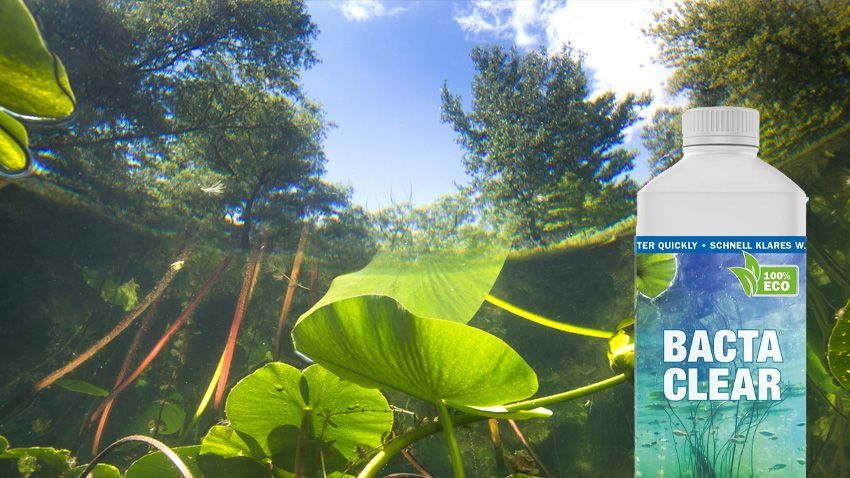
Finally, it is important to add a bottle of Bacta Clear to your pond water twice a year: once in the spring and once in the fall. This ensures that your pond remains clear and balanced. Bacta Clear contains a mix of two types of bacteria that remove waste products from the water. This increases oxygen levels in the water, which in turn promotes the growth of pond plants. One bottle of Bacta Clear is suitable for ponds up to 20,000 liters and is not harmful to humans, plants or animals.
Simons advice for pond bacteria
Add bacteria to the plant filter twice a year: once in the spring and once in the fall.
BACTA CLEAR
- Pond bacteria for 1,000 to 20,000 L
- 100% eco: clear water fast
- Safe for humans, plants & animals
7. Extra tip: for when you have a deep pond
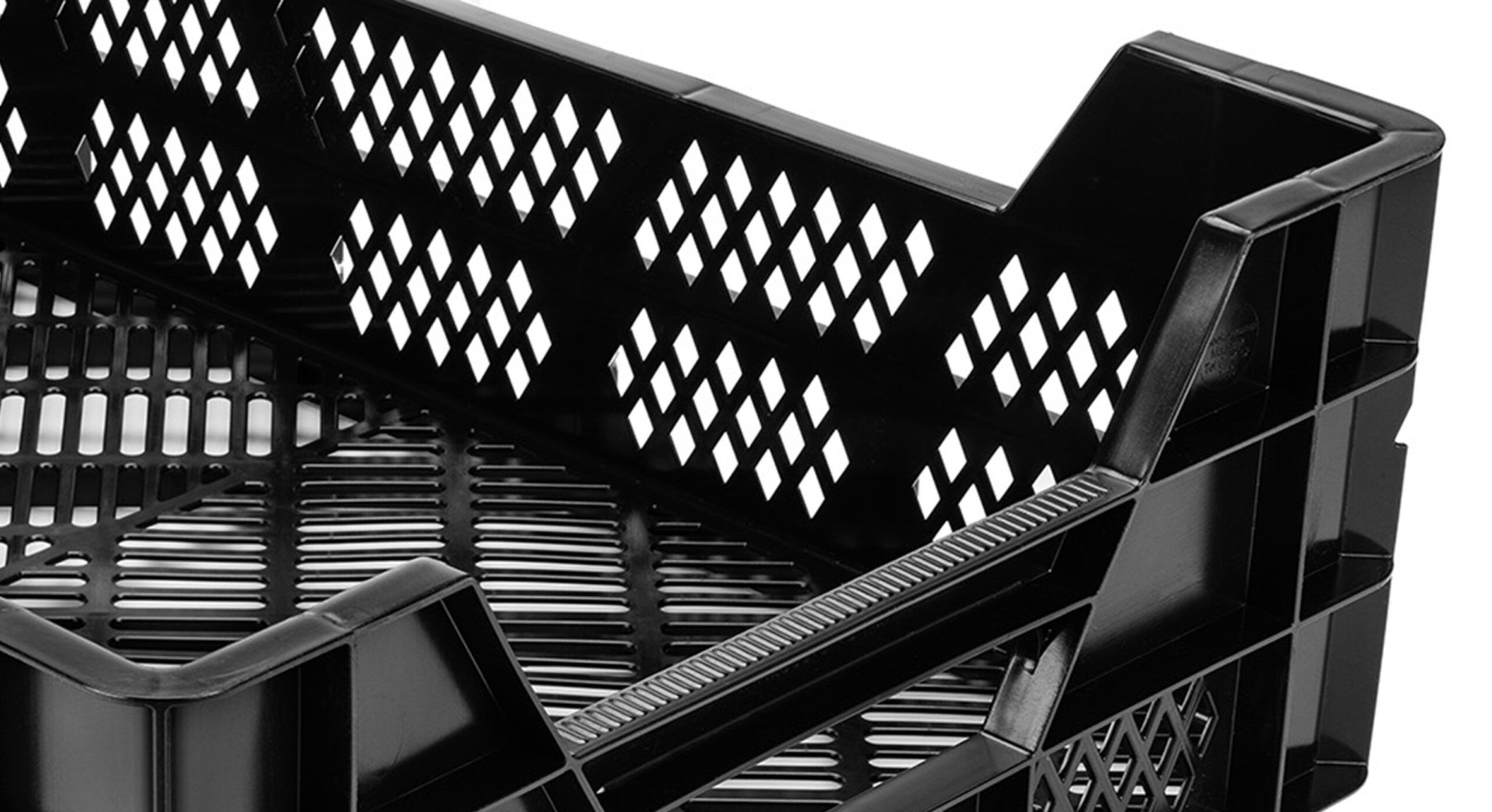
In many water features, variation in depth is not considered. If you want to add a shallow area for plants, you can use special crates. These are stackable, making it easy to create a shallow area. Several smaller planters can be placed in one crate.
Simons advice for pond crates and pond plants
With 3 stacked pond crates you can create a -80cm deep pond in a -40cm zone for various pond plants. For example, put 3 baskets of oxygen plants like needleweed together with 3 baskets of irises to place a crate full of water purifying plants in your pond.

- Unfortunately, a common mistake: the pond is already filled with water while the pond plants have yet to be placed. This makes it difficult or even impossible to place all the plants in a good, sturdy spot. Simon therefore recommends starting first with a thin layer of pond substrate in an empty pond, after which you only allow a small layer of water into the pond. You can now step through the pond with boots on to place the aquatic plants in place in the substrate. Then top up with substrate. Is everything set and firm? Only then fill the entire pond with water.
- If you have a somewhat larger pond, it is smart to work from the inside out. So you start in the lowest zone and work outward step-by-step. You end in the shallowest zone (swamp zone).
- When placing the aquatic plants, also pay attention to what depth is best for optimal growth. This is indicated on the packaging of our pond plants. Do you like a lot of plants? Then place the baskets or crates against each other.
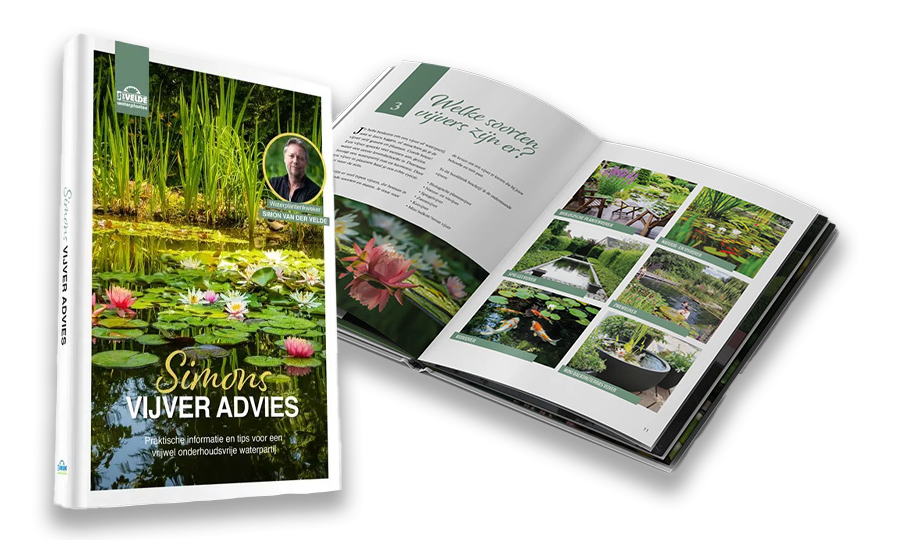
Want more helpful tips?
This is what our customers say!
Excellent 300+ reviews at
Great advice and material from Simon for our new pond.
So without any prior knowledge from us now for 3 years a picture in the garden and beautiful clear water 🍀🙏
Great products and knowledgeable!
Ordered 6 x crab crab, these arrived somewhat short-winged and did not float well in the pond. But with some patience and attention they have now grown beautifully large and are flowering beautifully!
For 30 years I have had a pond. Remodeled this season with some of my old pond water and plants.
Supplemented with clear pond suggestions from van der Velde. The result is better than I ever had: beautiful plants and so clear that I can see the fish down to the bottom.
Really great !!!
A first patio pond is fun and exciting to experiment with. With the help of the excellent, involved support, the plants from the mini kit have come to life. Thanks to the addition of extra bacteria, I can now easily see a frog swimming in the mini pond. Thanks to Britt for her good advice. Also, the delivery is careful and fast. So far, a beautiful water lily has appeared twice, folding its leaves to go to sleep at night.Just following this cycle is beautiful.
Without too much experience, I began a sizable pond project. I bought Simon's book, and it helped me tremendously, both in construction and setup. Then I ordered the substrate, bacteria and all the plants, following as much as possible the method described in the book, for a natural pond without pumps and filters.
Very knowledgeable advice, extensive web shop and above all, excellent customer service.
My supplied Cape Lily turned out not to be viable, without any problems a new one was then sent in no time.
Can't say that I super liked what I ordered from Van der Velde. Plants, food, ground cover, gravel.
Well packed, fast delivery, and excellent quality!
If you have not ordered anything I would do it quickly, you will not regret it.
Good luck !

Simon van der Velde: Expert on ponds and an advocate of biodiversity and sustainability
Simon van der Velde is an expert in ponds with more than 35 years of experience in designing dream ponds. He is the founder of "Van der Velde Aquatic Plants," a company focused on creating biodiverse and natural ponds without the use of pumping systems and filters. Simon's vision goes beyond creating beautiful ponds; he also wants to contribute to the restoration of biodiversity in the Netherlands, Europe and the rest of the world. In addition to his work as a pond specialist, Simon is a passionate nature lover and is committed to preserving nature and the environment. He inspires people to take a sustainable approach to their gardens and the natural environment. Simon's passion for biodiversity and natural lifestyle makes him an advocate for sustainability and a key player in restoring the natural balance in our world.
Pond advice and tips
Frequently asked questions about swimming ponds
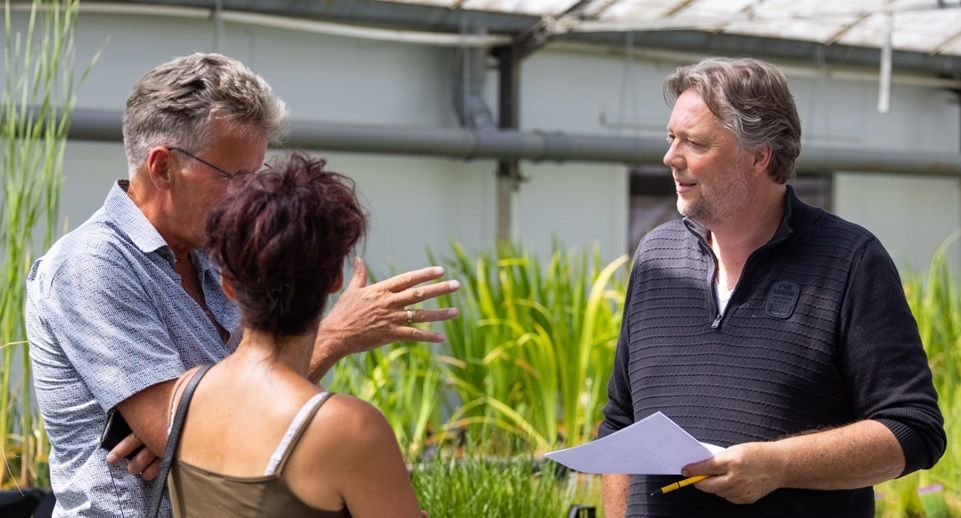
Yes, it is absolutely possible to make your own swimming pond, although it is a sizeable project. Getting started yourself can save you costs, but it does require time, patience and the right tools and materials. However, the satisfaction of completing such a project is unmatched.
Construction of a swimming pond can range from a few weeks to a few months, depending on the complexity of the design, the size of the pond and weather conditions.
A swimming pond generally requires less energy than a traditional pool because it does not involve heating or chemical treatment processes. Energy costs for a swimming pond depend mainly on any pumps or filters used.
Annual maintenance costs for a swimming pond vary, but on average you can expect between €100 and €500. These costs include plant care, pond bacteria, pond maintenance materials and any repairs.
For a natural swimming pond, oxygen plants such as hornwort, waterweed and pondweed are ideal. Sumpfpflanzen such as reed, cattail and calamus also help purify the water and provide a natural look.
Pond inspiration and examples

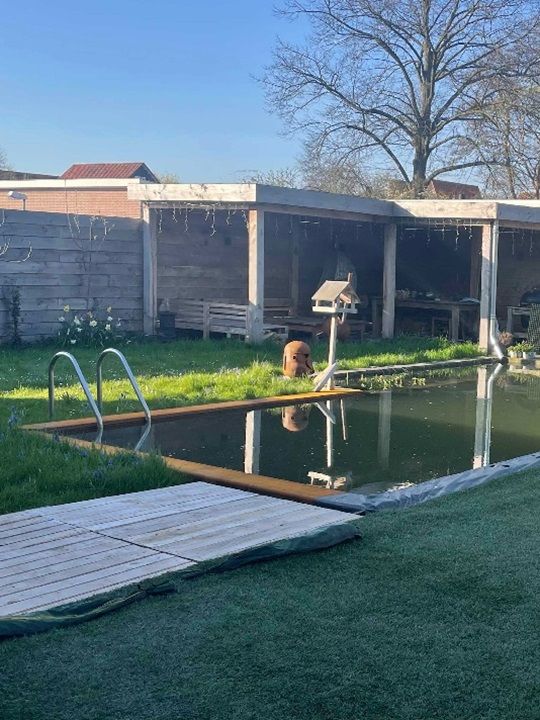


Constructing a swimming pond
Different types of natural swimming ponds
Advantages and disadvantages of a swimming pond
- Costs: A swimming pond is often more economical to construct. The investment mainly involves pond liner, pond plants and pond substrate. On the other hand, a swimming pool can be more expensive because of the foundation and equipment required.
- Aesthetics: A swimming pond offers a natural look that attracts both people and pond animals. In contrast, the typical light blue of a swimming pool can appear less natural.
- Maintenance: Thanks to a natural plant filter, a swimming pond requires minimal maintenance. In contrast, a swimming pool often requires chemicals and special equipment to keep the water clear.
- Shape and design: A swimming pond can be constructed in any natural shape, whereas a swimming pool often has a standard rectangular shape.
- Ecology: A swimming pond is completely organic thanks to the presence of aquatic plants and pond bacteria, eliminating the need for harmful chemicals.
- Year-round enjoyment: Even outside the swimming season, a swimming pond is a joy to behold and a nice place to be because of the vibrancy of plants and animals. A pool, on the other hand, often covered, can look deserted out of season.

